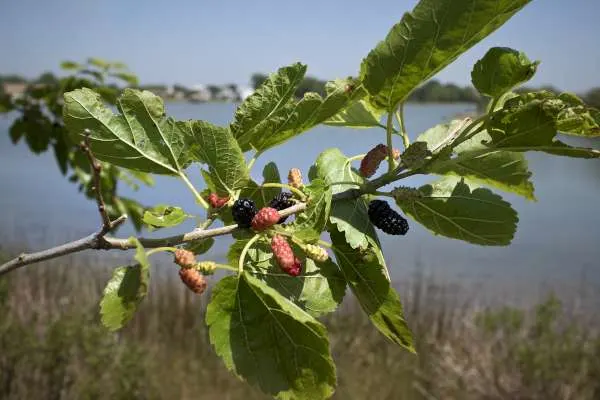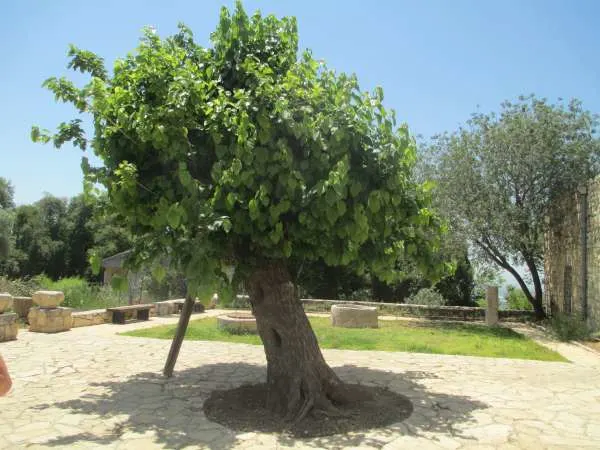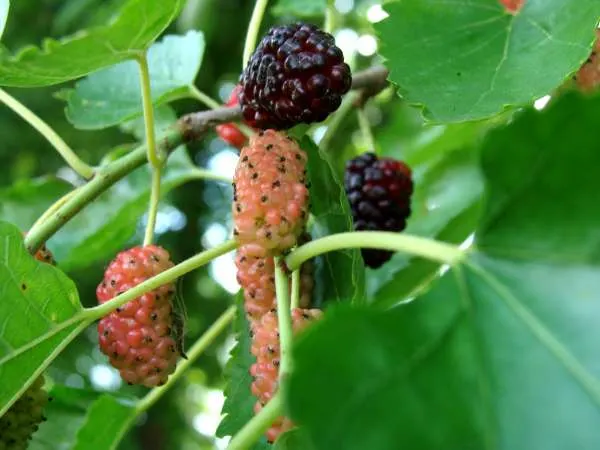Mulberry trees, with their broad, shady canopies and sweet, succulent fruit, seem like a charming addition to any garden or streetscape. However, in certain areas, these trees have been deemed illegal or are subject to strict regulations.
But what could possibly make a tree notorious enough to be banned? The article delves into the surprising and multifaceted reasons behind this arboreal prohibition.
Diving deep into the topic, we will explore the ecological, social, and economic factors that have put mulberry trees on the wrong side of the law. From the irritations due to allergy causing amounts of prolific pollen released to the unexpected consequences of their bountiful fruit, the story of the mulberry tree is a complex weave of human and natural history.
So, read the article till the end to find the five main reasons behind the illegality of mulberry trees.

Different Species of Mulberry Trees
Mulberry plants, members of the genus Morus, are deciduous trees known for their fruit and fast-growing nature. There are several species, but the most commonly discussed are the white, red, and black mulberries.
White Mulberry Trees
The white mulberry (Morus alba), native to East Asia, is perhaps the most widespread. Introduced in North America as part of an attempt to start a silk industry, it has since become naturalized and, in some areas, invasive. White mulberries are particularly robust and adaptable, which has allowed them to outcompete some native tree varieties.
Red Mulberry Trees
The red mulberry (Morus rubra) is native to eastern North America and is generally preferred for its fruit’s flavor. This similar species to whilte mulberries is less aggressive than its white counterpart and is now facing competition from the invasive white mulberry, leading to hybridization issues that can dilute the genetic stock of the native species.
Black Mulberry Trees
The black mulberry (Morus nigra), with its origins in Western Asia, produce fruit having the richest-flavored berries. It is the least common among the three, often found in more temperate climates, and is not known to be invasive.
Why are Mulberry trees Illegal In Some States? – 5 Main Reasons
Mulberry trees have a storied past and an intricate connection with both human and ecological histories. Despite their beneficial aspects, such as providing fruit and shade, they have been declared illegal in some states.
This ban primarily targets the white mulberry tree, an Asian native, which has become an invasive species in various parts of the United States.
#1- Invasive Species Concerns
The core of the issue lies in the status of the white mulberry tree as an invasive species. This particular mulberry species was introduced to North America in an attempt to establish a silk industry, as mulberry leaves are the preferred sole food for silkworms.
However, these white mulberry trees have spread aggressively beyond their intended confines. Their ability to outcompete and displace native vegetation, including the native red mulberry, has led to a significant ecological imbalance.
The robust nature of white mulberry allows it to thrive in a variety of soil types and conditions, overshadowing the more delicate and less aggressive native red mulberry.
This competitive edge of white mulberry has put local ecosystems at risk and has been a contributing factor to the decline of the native species.
#2- Pollen Allergies and Health Issues
Another reason for the restriction on mulberry trees, particularly the male trees of white mulberry, is that they are prone to substantial allergy causing amount of pollen produced by them.
Mulberry pollen is considered one of the most potent allergens, which can exacerbate respiratory conditions such as asthma and cause significant discomfort for people with pollen allergies.
During the blooming season of white mulberry, the high pollen levels attributed to these fruit trees can severely impact air quality and public health. Some states have taken the step to make planting mulberry trees illegal to protect the well-being of their residents, opting instead for less allergenic tree species.
#3- Municipal Maintenance and Clean-Up Challenges
Another practical concern associated with mulberry fruit trees, which has led to their prohibition in some municipalities, is the mess created by their staining fruit.
The fully ripe fallen fruits from mulberry trees can stain sidewalks, cars, and buildings, leading to unsightly urban landscapes and the need for frequent cleaning.
Cities find the high clean-up bills associated with mulberry trees to be a significant nuisance. The cost of removing fallen berries and cleaning the stains they leave behind can be substantial.
To mitigate these issues, in 1990 several cities have passed ordinances against planting mulberry trees, especially the varieties that produce a large amount of fruit.
#4- Hybridization Threats
The different mulberry trees, including the white mulberry and the native red mulberry, can also cross-pollinate. This hybridization poses a threat to the genetic purity of the native species.
The resulting hybrids can bear characteristics that make them more resilient and invasive, further complicating conservation efforts for the native red mulberry.
In an effort to preserve native biodiversity and prevent such hybridization, some states have implemented regulations against planting mulberry trees, especially the non-native trees varieties.
#5- Ecological Disruption
The fruit of the mulberry tree, while a sweet treat for wildlife and humans alike, can also contribute to its invasive status.
Birds and other animals feast on the fruit and subsequently disperse the seeds over wide areas, facilitating the spread of mulberry trees into unwanted regions.
This natural distribution can lead to the mulberry species establishing itself in habitats where it can dominate and disrupt local flora and fauna, further justifying its classification as an undesirable and, in some places, illegal plant.

List Of States That Imposed The Ban On Mulberry Trees
Local government of several cities have implemented restrictions on the sale or planting of mulberry trees due to various concerns associated with them. The list of cities include:
El Paso banned in 1992
Tucson, Arizona banned in 1984,
Las Vegas, NV followed with a ban in 1991
Albuquerque.
If you’re wondering whether mulberry trees are permitted in your locality, it’s wise to reach out to a local nursery, a professional orchard, or your cooperative extension service. They can provide the most current and relevant information for your area.
Mulberry trees that were planted prior to these bans are now aging and, as a result, their presence is diminishing.
The debate over mulberry trees is ongoing, with valid points made on both sides. many gardeners say that mulberry trees serve as excellent companion plants.
They’re known to attract beneficial pollinators and can potentially enhance the fruit production of surrounding plants due to this activity.
Conversely, critics argue that mulberry trees can be invasive and may cause ecological disturbances. They advocate for the planting of other fruit trees or native species, like the honey mesquite tree, which fit better within the local ecosystem and do not have the same problematic characteristics as mulberry trees.
Are Mulberries Poisonous To Humans?
Mulberries are not poisonous to humans; in fact, they are quite edible and nutritious fruits. These juicy edible fruits are enjoyed by people around the world and can be eaten fresh, dried, or used in a variety of culinary dishes such as pies, jams, and wines.
Mulberries come from trees in the Morus genus and are rich in vitamins and antioxidants. It’s important to note, however, that unripe mulberries and the milky sap from the tree itself can cause stomach upset if ingested. So, it’s best to consume mulberries that are fully ripe and have been properly prepared. Additionally, like many fruits, mulberries should be washed before eating to remove any dirt or residues.

Mulberry Tree Benefits
Mulberry trees offer a wealth of benefits that extend beyond their lush foliage and sweet fruit. Here are some of the notable advantages they bring:
1. Environmental Benefits:
Like all trees, mulberry tree play a role in absorbing carbon dioxide and other harmful gases, releasing oxygen back into the atmosphere.
The root systems of mulberry tree help to prevent soil erosion and can improve soil health through the organic matter provided by fallen leaves and fruit.
Mulberry trees provide habitat and food for a variety of wildlife, including birds, insects, and small mammals.
2. Nutritional Value:
The mulberry fruits are rich in nutrients, offering a good source of vitamin C and K, iron, potassium, and dietary fiber.
the produce fruit mulberries can be eaten dried, or used in cooking and baking, making them a versatile fruit for enhancing nutrition.
3. Economic Importance:
The white mulberry, in particular, is essential for silk production as its leaves are the primary food source for silkworms.
Mulberry trees can be cultivated for fruit production and are also used as a food source for livestock.
4. Medicinal Uses:
Different parts of the mulberry tree, including leaves, bark, and fruit, have been used in traditional medicine systems to treat various ailments.
Modern Studies are exploring the potential health benefits of mulberry fruit and leaves, such as blood sugar regulation and antioxidant properties.
5. Shade and Cooling:
The dense foliage of a mulberry tree provides shade, which can reduce the need for air conditioning in nearby homes and buildings.
The shade also creates a cooler microclimate that can be enjoyed during outdoor activities.
Why Are Mulberry Trees Special?
Mulberry trees( white instead of red mulberry) hold a particularly special place in the world of sericulture, which is the cultivation of silk worms. The white mulberry tree leaves (Morus alba) are the preferred sole food for silkworms, the caterpillar stage of the silk moth (Bombyx mori).
These white mulberry are essential for silk production because the quality of their leaves directly affects the health of the silkworms and the quality of the silk they produce.
When silkworms consume mulberry leaves, they spin their cocoons, which are then harvested to create silk, a luxurious and historically significant textile that has been prized for thousands of years.
The relationship between white mulberry trees and silkworms is a remarkable example of how a single plant species can have a profound and lasting impact on human economies and cultures, illustrating just one of the many reasons why mulberry trees are considered so special.
Why Can’t You Find Mulberry Fruits In Stores?
Finding fresh mulberries in grocery stores can be a rare occurrence, and there are practical reasons for this.
Mulberries are delicate and don’t transport well; they tend to spoil quickly after being picked, which makes shipping them over long distances quite challenging. They also have a short shelf life, which means they must be sold and consumed quickly to avoid waste.
Unlike more robust fruits like apples or oranges, mulberries are quite soft and can easily be damaged during handling, leading to bruising and spoilage.
Because of these factors, commercial growers often find it unprofitable to sell them through conventional stores. Instead, mulberries are more commonly found at local farmers’ markets or are picked fresh from the trees by individuals who have them in their gardens.
This limited availability adds to their exclusivity and charm, making them a seasonal treat for those who have access to the trees when the fruit is ripe.
FAQs
Can You Eat Mulberries Raw?
Yes, mulberries are perfectly safe to eat raw and are quite delicious when ripe. They have a sweet and slightly tart flavor and can be enjoyed straight off the tree. It’s always a good idea to wash them first to remove any dirt or debris. Unripe berries should be avoided as they can cause stomach discomfort.
Where Do Mulberry Trees Grow?
Mulberry trees are quite adaptable and can grow in a variety of climates. They are native to warm regions of Asia, Africa, and the Americas but have been cultivated in many other parts of the world. They thrive in full sun and well-draining soil and can often be found in both rural and urban settings, from farms to backyard gardens and along city streets where they are permitted.
How Do You Grow Mulberries?
Growing mulberries is generally simple. They can be propagated from seeds or more effectively from cuttings or nursery saplings for better fruit quality. Plant them in a sunny spot with well-draining moist soil, and they’ll need little attention.
While they can withstand dry conditions, regular watering boosts fruit production. Occasional pruning helps maintain tree health and shape. Expect fruit within a few years.
Conclusion
In summary, mulberry trees are outlawed in some regions due to their invasive nature, substantial allergy-triggering pollen, and the threat they pose to native species.
While they provide ecological and nutritional value, the decision to regulate their planting balances these benefits against environmental protection and public health concerns.
Recognizing the reasons behind these regulations is key to responsible mulberry tree cultivation where it is legally and environmentally appropriate.
